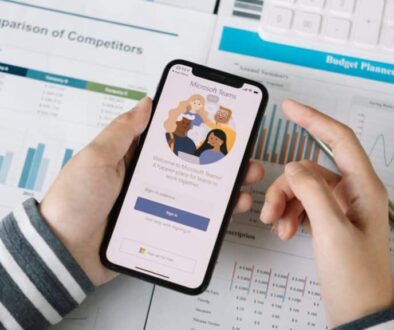Monetize Wi-Fi Calling a 4 Point Checklist
Monetize Wi-Fi Calling…A 4 Point Checklist

Connections matter in the information economy. But there are obstacles to staying connected—in-building coverage, international travel, and roaming limitations from cellular carriers. This has cause businesses large and small to offer Wi-Fi calling to bridge the connection gap carriers have left.
Some companies offer Wi-Fi connections for the benefits of their employees or to keep costs down. But other companies are recognizing the value of filling that connectivity gap and considering ways to monetize their Wi-Fi networks by offering connections to their customers—for a fee. It’s an area of untapped opportunity and revenue streams for many businesses.
Monetizing Wi-Fi calling into a revenue stream isn’t always a straightforward proposition, though. So to help make sure you’re well positioned to take advantage of this trend, here are several things to consider when thinking about setting up a Wi-Fi calling service.
Not sure what exactly Wi-Fi calling is?
1. Do you have a Wi-Fi source with appropriate bandwidth?
First things first: in order to monetize your Wi-Fi network by offering Wi-Fi calling to customers, you need a Wi-Fi network with sufficient bandwidth. If you currently have a Wi-Fi network, how much traffic can it handle? What’s the minimum speed at capacity?
“In order to complete a WiFi call, a minimum of 1Mbps is required,” according to CNET
Take a long, hard look at your Wi-Fi network and run analysis to ensure you can deliver on the promise of Wi-Fi calling. If you don’t yet offer Wi-Fi access to your customers, make sure you shop around and look at the ability to scale and the throughput speeds needed to deliver Wi-Fi access worthy of payment. You may also need to ensure your network can support Wi-Fi calling on top of other Wi-Fi services, like simple Internet access and streaming services.
Want to monetize wi-fi calling? See how here!
2. Do you have a plan for fee structure and payment collection?
Whether your network is a dedicated Wi-Fi network, or a series of hotspots set up for you to draw revenue from, you should have a solid plan in place to collect fees from users. Will you use existing payment methods to collect your fees? Will you need to build new internal payment methods? Will you outsource fee collection? Whatever you choose, price your service accordingly to ensure your revenue exceeds your costs, even in times of slower traffic.
As well as a plan for how you will collect payment, you should determine your fee structure. Reasonable fees vary from country to country, and between industries. Most common fee structures include a flat rate per day, with a time limit enforced, or a staggered fee where consumers pay more for additional functions and speeds. Airlines offer services that last for the duration of the flight. There are many ways to slice and dice Wi-Fi revenue.
Wi-Fi calling is a valuable add-on for consumers and business users alike, especially if you offer service in areas of poor coverage. Consider a basic Wi-Fi service and a premium service that enables Wi-Fi calling to interested parties.
Check out our Wi-Fi calling solutions >
3. Do you understand the limits built in to certain phones and carriers?
Even if you offer a strong connection, and charge accordingly, some of your customers may be unable to participate in Wi-Fi calling simply because the make/model of their phones do not allow it. Others may be limited by their carrier’s plans. Keep tabs on which phone models and carriers have limitations in place by visiting support websites:
Some carriers limit Wi-Fi calling to in-country calling while others offer a wide range of countries to call with a Wi-Fi connection. Providing this information to your customers will simultaneously help protect you from angry customers who can’t participate in Wi-Fi calling, and serve as a value-add as a Wi-Fi calling provider.
If consumers are blocked by their phone or carrier, you can consider advising them they can use your Wi-Fi connection to run applications that bypass Wi-Fi calling with an over-the-top (OTT application), including Skype, Google Voice, Fring, Tango, and more.
4. Are you anticipating future connectivity needs?
Offering Wi-Fi and Wi-Fi calling may not be in the cards for your business today. As the proliferation of smart phones, connected devices, and mobility grow, the potential for Wi-Fi monetization grows with it.
Years ago, the idea of cord cutting, canceling cable subscriptions and relying on Internet only to access entertainment was laughable. Today, the decline in former pay TV subscribers is perilously close to double-digit percentages.
It may be a stretch to compare cord cutting with mobile provider contract cutting, but more and more consumers are opting to offload data usage to WiFi to keep costs down—and many carriers are encouraging this behavior to keep their networks manageable.
If you aren’t ready to monetize WiFi now, circle back and re-evaluate every six months or so. You may find that the business case makes sense more quickly than you think.
If you currently are already monetizing Wi-Fi now, make sure you stay up-to-date on ways you can make your network more valuable with features like Wi-Fi calling. Check network bandwidth and adjust prices accordingly.
Next steps
Wi-Fi calling has changed the game for consumers and mobile network operators (MNOs) alike. It could change the game for your business too, if you seek to monetize Wi-Fi calling as an additional business revenue stream.
To learn more about WiFi calling, download our free ebook, Voice Over WiFi for Dummies now. Chapter five, “Examining VoWiFi Use Cases,” may provide the answers to questions you have—if not, a friendly Towner Communications representative is always a click or phone call away.












